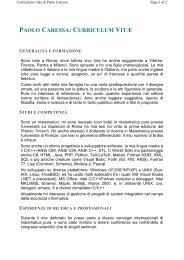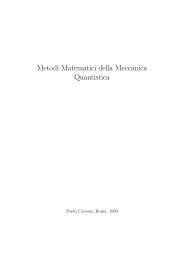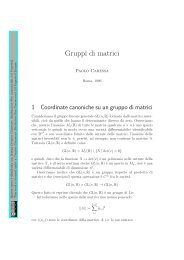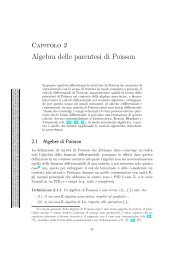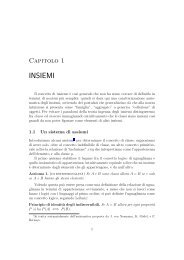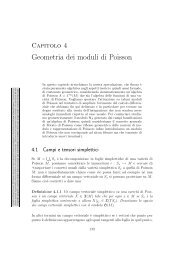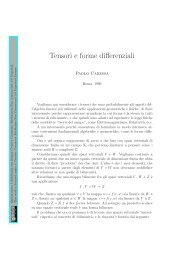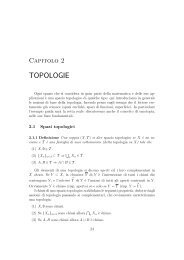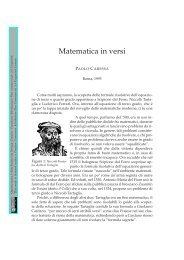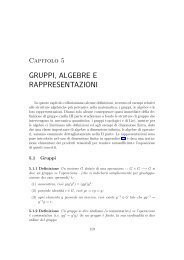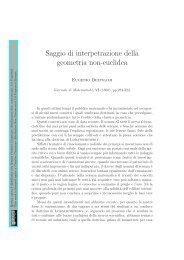Poisson and Foliated Complex Structures - Paolo Caressa
Poisson and Foliated Complex Structures - Paolo Caressa
Poisson and Foliated Complex Structures - Paolo Caressa
Create successful ePaper yourself
Turn your PDF publications into a flip-book with our unique Google optimized e-Paper software.
<strong>Poisson</strong> <strong>and</strong> <strong>Foliated</strong> <strong>Complex</strong> <strong>Structures</strong> 7globalintegrablecomplex structure, thusweneed: 1)anondegenerate2-formω onI(3); 2)afoliationof rank4whose leaves aresymplectic w.r.t. pull-backsof ω; 3) a complex structure on I(3) such that its restriction to any leave ofthe foliation gives rise to a Kähler structure.Let us work on the group G with complex coordinates(z 1 ,z 2 ,z 3 ) = (x 1 + √ −1x 2 ,x 3 + √ −1x 4 ,x 5 + √ −1x 6 )Next we consider the following basis for TI(3)ξ 1 = ∂∂x 1ξ 2 = ∂∂x 5ξ 3 = ∂∂x 3+x 1∂∂x 5+x 2∂∂x 6ξ 4 = ∂∂x 4−x 2∂∂x 5+x 1∂∂x 6ξ 5 = ∂∂x 6ξ 6 = ∂∂x 2<strong>and</strong> their dual 1-formsα 1 = dx 1 α 4 = dx 4α 2 = dx 5 −x 1 dx 3 +x 2 dx 4 α 5 = dx 6 −x 2 dx 3 −x 1 dx 4α 3 = dx 3 α 6 = dx 2Now define the non degenerate 2-formω = α 1 ∧α 6 −α 2 ∧α 5 −α 3 ∧α 4<strong>and</strong> take the distribution D spanned by {ξ 2 ,ξ 3 ,ξ 4 ,ξ 5 }: since commutationrules for ξ i s are[ξ 1 ,ξ 4 ] = ξ 5 [ξ 1 ,ξ 3 ] = ξ 2 [ξ 3 ,ξ 6 ] = −ξ 5 [ξ 4 ,ξ 6 ] = ξ 2(remaning commutators being zero), we get an involutive distribution: moreoverdω(ξ i ,ξ j ,ξ k ) = 0for any i,j,k ∈ {2,3,4,5}, thus the pull-backs of ω to the leaves of D areclosed <strong>and</strong>, since these pull-backs are non degenerate, we get a symplectic foliation,thus a regular <strong>Poisson</strong> structure. Finally consider the almost complexstructure defined asJ(ξ 1 ) = −ξ 6 J(ξ 2 ) = ξ 5 J(ξ 3 ) = ξ 4J(ξ 4 ) = −ξ 3 J(ξ 5 ) = −ξ 2 J(ξ 6 ) = ξ 1





